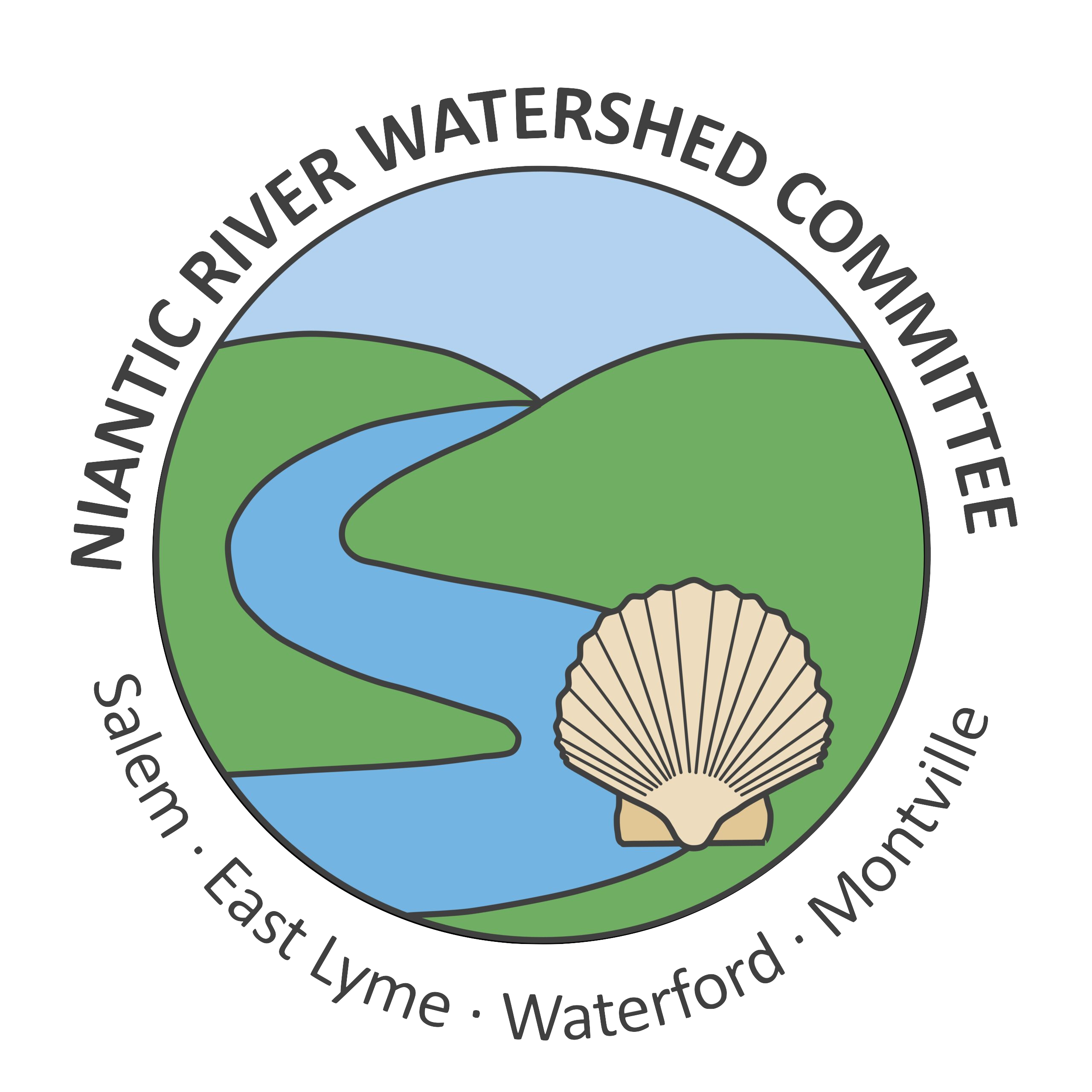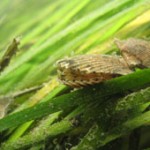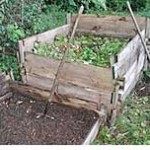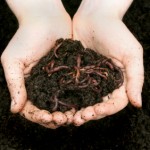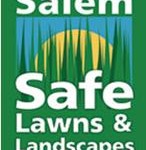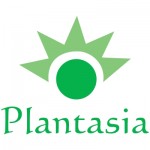Go Natural for the Niantic!
Water Quality and the Niantic River
One of the main objectives of the Niantic Watershed Committee is to educate watershed residents on the relationship between nonpoint source pollution and water quality. Very few people think of the Niantic River as an estuary, but it is. Estuaries are areas where fresh water and salt water come together to create rich, diverse habitats. (To learn more about estuaries, you can visit http://estuaries.noaa.gov/About/Home.aspx).
The Niantic River was once known for its abundance of bay scallops. Bay scallops (Argopecten irradians) are dependent on eelgrass, and the eelgrass beds in the Niantic River have been in decline since the 1980s. The cause is unknown, but has been linked to nonpoint source pollution, which is pollution from many diffuse sources that is caused when rainfall picks up natural and human-made pollutants and deposits them into lakes, rivers, and coastal waters, such as the Niantic River and Long Island Sound.
Partnering For Water Quality
The Niantic River Watershed Committee is partnering with area nurseries, greenhouses and landscapers to help areas homeowners and businesses Go Natural for the Niantic – that is, to utilize landscaping plants, materials and techniques that promote and protect our water resources. This includes a variety of landscaping techniques that keep water onsite and to allow it to soak into the ground, rather than running off into a storm drain and ultimately out into the Niantic River.
Click here for a pdf presentation on Landscaping for Water Quality
Water-Friendly Landscaping Techniques
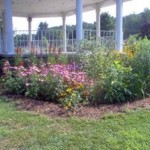 Use one or several of these landscaping techniques to beautify your property and help to improve the water quality and health of the Niantic River.
Use one or several of these landscaping techniques to beautify your property and help to improve the water quality and health of the Niantic River.
- Rain Gardens – Rain gardens are shallow bowl shaped gardens that are designed to gather and infiltrate a pre-specified amount of water, either from a roof area or a paved area such as a driveway. Rain gardens are not water gardens. They are not supposed to hold water indefinitely. Because rain gardens are not water gardens, they can be planted with your favorite perennials to create a beautiful and functional garden for your home landscape.
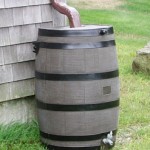 Rain Barrels – Rain barrels are used in conjunction with your gutter and downspout system to capture and store water from your roof. A 1” rainfall from an average sized roof will fill a rain barrel. Water stored in a rain barrel can be used to water your planters, window boxes, lawn and garden.
Rain Barrels – Rain barrels are used in conjunction with your gutter and downspout system to capture and store water from your roof. A 1” rainfall from an average sized roof will fill a rain barrel. Water stored in a rain barrel can be used to water your planters, window boxes, lawn and garden.
- Native Plants – Native plants are good for your garden in many, many ways! They evolved in our soils and in our climate, so they don’t need extra water or fertilizer to grow. They are adapted to our insects, so they don’t need extra pesticides to
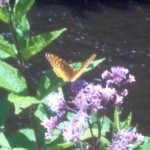 protect them. They are co-evolved with our wildlife, so they provide the types of food native wildlife need. Plants natives in your yard and watch birds and butterflies appear!
protect them. They are co-evolved with our wildlife, so they provide the types of food native wildlife need. Plants natives in your yard and watch birds and butterflies appear!
- Riparian Vegetation – Shorelines, whether they are stream banks or waterfront, are extremely vulnerable to the effects of erosion. Although attractive, green lawns extending to the water’s edge have little ability to protect the shoreline fromthe effects of erosion, due to the limited root structure of grass. In addition, lawns have little ability to slow down or absorb pollutants that are transported in
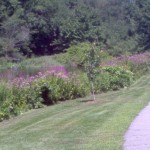 storm runoff. Creating defined borders for your garden using riparian plantings such as perennials, deep-rooted ornamental grasses, and shrubs provide the root mass and bio-mass to protect stream banks and shorelines from erosion and polluted storm runoff.
storm runoff. Creating defined borders for your garden using riparian plantings such as perennials, deep-rooted ornamental grasses, and shrubs provide the root mass and bio-mass to protect stream banks and shorelines from erosion and polluted storm runoff.
- Soil Testing – Healthy soils need little help from chemical fertilizers and pesticides. Before applying lawn chemicals, test your soil. Soil testing will help to determine the quantity of nutrients in the soil that are available to your plants, which in turn determines the amount of fertilizer needed. Soil t
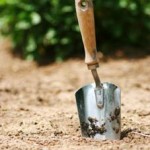 esting will also measure soil pH, humic matter and exchangeable acidity. These analyses indicate whether lime is needed to balance soil pH and, if so, how much to apply.
esting will also measure soil pH, humic matter and exchangeable acidity. These analyses indicate whether lime is needed to balance soil pH and, if so, how much to apply.
- Organic Lawn Care – Lawn and garden chemicals are expensive. Wouldn’t you like to have a green and healthy lawn or garden without the cost of fertilizers and pesticides? Organic lawn and garden care will let you do that. Lawns and
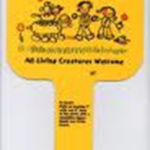 gardens“addicted” to chemicals are less able to defend themselves from pests and the effects of drought. Over-application of chemicals results in contaminated run-off to ponds and streams. Lawn chemicals are toxic to the very organisms in the soil that keep the soil healthy and productive. Organic lawn care promotes the natural processes that create healthy soils. And healthy soils mean healthy plants!
gardens“addicted” to chemicals are less able to defend themselves from pests and the effects of drought. Over-application of chemicals results in contaminated run-off to ponds and streams. Lawn chemicals are toxic to the very organisms in the soil that keep the soil healthy and productive. Organic lawn care promotes the natural processes that create healthy soils. And healthy soils mean healthy plants!
- Composting – Healthy lawns and gardens are the result of healthy soil. Soils contain an important ecosystem, made up of bacteria, fungi, and organisms, including plants, that all contribute to the wellbeing of the ecosystem. Composting provides organic material and nutrients that plants need, without toxic chemicals that destroy soils organisms responsible for maintaining soil structure and health.
- Local Sources – Not only does purchasing materials from local sources benefit local businesses, but it is good for the environment. Transportation costs can drive up the cost of a product and increase the carbon footprint of that product.
ver·mi·cul·ture noun \ˈvər-mə-ˌkəl-chər\
For more information on vermiculture, visit http://www.cityfarmer.org/wormcomp61.html.
Support Your Local Businesses
The following businesses have partnered with the Niantic River Watershed Committee to promote water-friendly, environmentally sustainable gardening and landscaping practices.
Green Survival Gardens 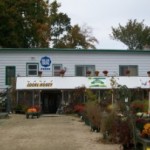
Hendrik Verkade lll
Hendrik Verkade IV
29 Rope Ferry Rd
Waterford, CT 06385
860-442-8809
Burnett’s Landscaping
Mary Richardson
Salem, CT 06420
860-859-3100
Safe Lawns of Salem
406 New London Road
Salem, CT 06420
860-859-3100
Oasis Gardens by Kelly
Kelly Sisk
140 Fog Plain Rd
Waterford, CT 06385
860-460-8732
Plantasia
57 Cedar Lane
Bozrah, CT 06334
860-639-8088
Perennial Harmony
Petie Reed
Rich Oliver
368 Boston Post Road
Waterford, CT 06385
860-440-3653
If you are a nursery owner or landscaper and would like to be included in this listing, please contact Judy Rondeau at 860-887-4163 x401 or judy.rondeau@comcast.net.
Brochures
The following Clean Waters Fact Sheet Series brochures from CT NEMO and CT SeaGrant provide additional information on water-friendly landscaping practices.
- Rain Gardens in CT
- A Planting Guide for Riparian Sites
- Lawn Care the Environmentally Friendly Way
- Going Native- Rethinking Plant Selection for the Home Landscape
- The Four Seasons of Water Quality Protection
- Conservation Landscaping for Water Quality
- Integrated Pest Management
For Additional Information, Visit These Sites:
CT College Arboretum – http://arboretum.conncoll.edu/
Univ. Connecticut Soil Testing – http://www.soiltest.uconn.edu/sampling.php
CT Agricultural Experiment Station – http://www.ct.gov/caes/site/default.asp
CT NEMO – http://nemo.uconn.edu/
CT SeaGrant – http://www.seagrant.uconn.edu/
Organic Lawn Care Sites –
- http://www.organiclawncare101.com/why-organic.html
- http://www.organiclandcare.net/
- http://safelawns.org/
Visit often for updates and special offers from participating businesses!!!!
